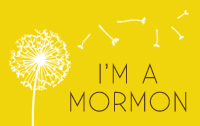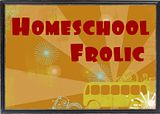She is very curious about materials that I use, so I promised her a few reviews. Here's the first one.

I love this product. I am not necessarily a Charlotte Mason home educator, but I have to say I am very impressed with this language arts book for numerous reasons.
1) The artwork. I know, I know, I am just one of the crowd. Most of the reviewers at Timberdoodle (where I purchased it) said the same thing because it is true! My children love looking at the pictures, talking about the pictures, creating their own narratives about the pictures. Even three year old Emeline participates in this part of our studies. I am exceedingly impressed that the author picked artwork by the masters. Thank you for not dumbing down our children.
 2) I love the questions after the artwork and the poetry. Allow me to step onto my English teacher soapbox for a moment. Picture, if you will, a grade 11 classroom where all the students have been divided into very small groups (four max) to discuss the book their group has been reading. These books are not erudite, alienating, or over-their-heads. They were handpicked by me in a variety of genres to actually appeal to the high school crowd of non-readers (including things like Louis L'Amour and Orson Scott Card and Andromeda Strain). The students liked the books. The students also liked me--and this is important for this example. We'd been together through the evil research paper and perfect essays and Bohemian poetry. Trust me, we had a very tight bond and it was the end of the year and the students were more than willing to do what I asked.
2) I love the questions after the artwork and the poetry. Allow me to step onto my English teacher soapbox for a moment. Picture, if you will, a grade 11 classroom where all the students have been divided into very small groups (four max) to discuss the book their group has been reading. These books are not erudite, alienating, or over-their-heads. They were handpicked by me in a variety of genres to actually appeal to the high school crowd of non-readers (including things like Louis L'Amour and Orson Scott Card and Andromeda Strain). The students liked the books. The students also liked me--and this is important for this example. We'd been together through the evil research paper and perfect essays and Bohemian poetry. Trust me, we had a very tight bond and it was the end of the year and the students were more than willing to do what I asked.So I asked these students, whom I loved and had worked with all year, to get into their book groups and discuss what they had read so far. After all the noise of moving around desks and shuffling papers, the room was silent. They had no idea how to discuss literature. They weren't trying to be disrespectful, they just didn't know what to do. After the first wasted fifteen minutes, I started producing helpful prompt questions. That would generate a sentence or two, and then, nada. Nothing. Zilch. They were quiet or off-topic within three minutes.
This might not seem like a huge problem to some people but think about this: most of the world's most profound questions and ideas are found in literature. If you can't discuss literature, how can you discuss ideas? If you can't discuss ideas, how can you learn to think for yourself?
I propose that you cannot. And we all know that if you can't think for yourself, other people will do your thinking for you.
The ability to discuss literature is critical in so many ways. Suffice it to say, I started having mini book discussions at the beginning of each class where I modeled what happened around my family's dinner table all through my growing up years. I learned that knowing how to discuss what you read is a learned skill. Teach it to your children!

 3) After each poem, there is an opportunity for the children to draw what they pictured. When I first introduced the book to my 1st grader and pre-k boy, I gave them new scribblers and pencils. (Then I had to run downstairs and find a scribbler for my three year old who felt left out.) They carefully and lovingly wrote their names on the inside cover and then waited anxiously for what came next. We looked at the first bit of artwork, talked about it, took turns telling our own version of the story of what happened leading up to the moment in the picture.
3) After each poem, there is an opportunity for the children to draw what they pictured. When I first introduced the book to my 1st grader and pre-k boy, I gave them new scribblers and pencils. (Then I had to run downstairs and find a scribbler for my three year old who felt left out.) They carefully and lovingly wrote their names on the inside cover and then waited anxiously for what came next. We looked at the first bit of artwork, talked about it, took turns telling our own version of the story of what happened leading up to the moment in the picture.Then we moved on to the poem, "Stopping by the Woods" by Robert Frost. After I read the third line my children, quite of their own accord, started drawing what they were hearing. It was so natural for them. Creating a tangible reminder of what they pictured in their head was important to them and certainly cemented the ideas into their young brains. Creating art is naturally and gracefully included in this manual.
 4) The grammar is basic, quick, and painless. I don't believe in rushing young children into learning "concepts." When a child turns eight, you can start to formalize your instruction a little bit. Before that, you are better off (IMHO) to keep their interest in learning high and keep close tabs on when they are ready for something new. Nothing turns brains off faster than grammar. Unless you're like me--extremely sick. My children love everything about the poetry and artwork and they don't hate the grammar. That's awesome. Queen (the author) keeps things very simple and age appropriate. I think it is a practically perfect language arts primer.
4) The grammar is basic, quick, and painless. I don't believe in rushing young children into learning "concepts." When a child turns eight, you can start to formalize your instruction a little bit. Before that, you are better off (IMHO) to keep their interest in learning high and keep close tabs on when they are ready for something new. Nothing turns brains off faster than grammar. Unless you're like me--extremely sick. My children love everything about the poetry and artwork and they don't hate the grammar. That's awesome. Queen (the author) keeps things very simple and age appropriate. I think it is a practically perfect language arts primer.
In some reviews, people mentioned that they didn't like the quantity of copywork. I also think the amount of copywork is overkill and I've already mentioned that my daughter hates writing. That is an easy problem to fix though--don't make your child do all the copywork. Miriam writes two sentences a week. She acts like I'm killing her, but then she has fun reading through the poem to pick her favorite lines to copy.
Also, the book can be used as a workbook, but since I'm all about reduce, reuse, and save money, I just do all the assignments in a scribbler.
This line of language arts books are available for numerous age groups. It isn't as easy as you'd expect to pick the right book for your child's age. I purchased Language Lessons for the Very Young 1, recommended for ages 6-8. Miriam, my first grader, is doing all of it, including the grammar. My pre-K (5 yr) son is doing all the art/poetry narration stuff, but he loses interest in the grammar sections. That's fine with me. I'm happy with that arrangement. However, for Luke, and other kindergarteners, there is Language Lessons for Little Ones 2 (for ages 4-6) and Language Lessons for Little Ones 3 (for ages 5-7). Based on my experience, I would get Cowen the Little Ones 2.
Here's the link to Timberdoodle. All the Sandi Queen language arts materials can be found under the language arts link.
Hope this was helpful and not just long-winded!




That looks really cool. When you highlight something in yellow, we who follow you in google reader cannot read it, so maybe you should highlight in red. fyi
ReplyDeletelove ya
Your points are well-taken. It only takes a few simple questions to get minds going, but most times, no one knows what questions to ask. :)
ReplyDeleteAnd you got me totally interested in considering some sort of language arts curriculum...I think I'll be looking into those books. :)
Great review! I've been on the fence with this product, and you totally convinced me. Thank you for reviewing not just what the product has but what it accomplishes.
ReplyDelete